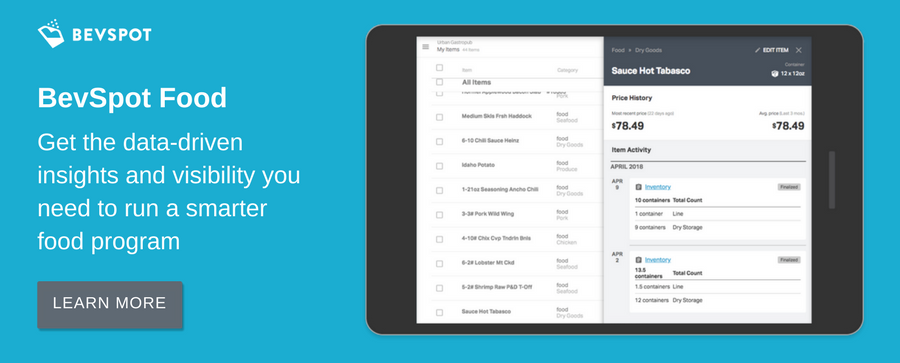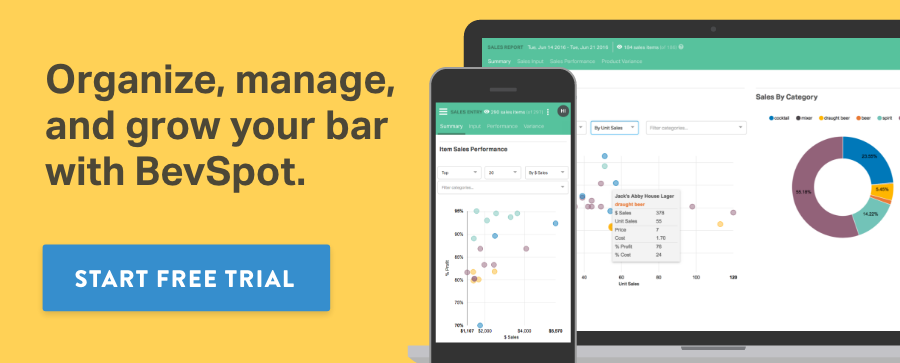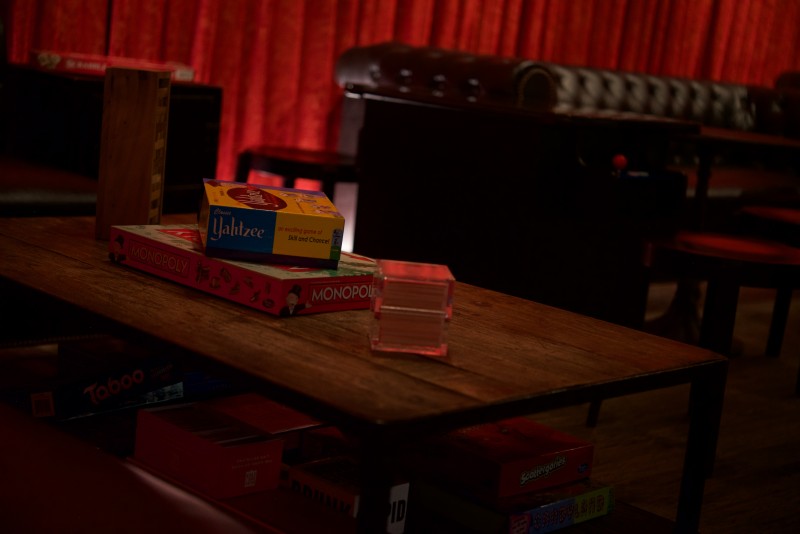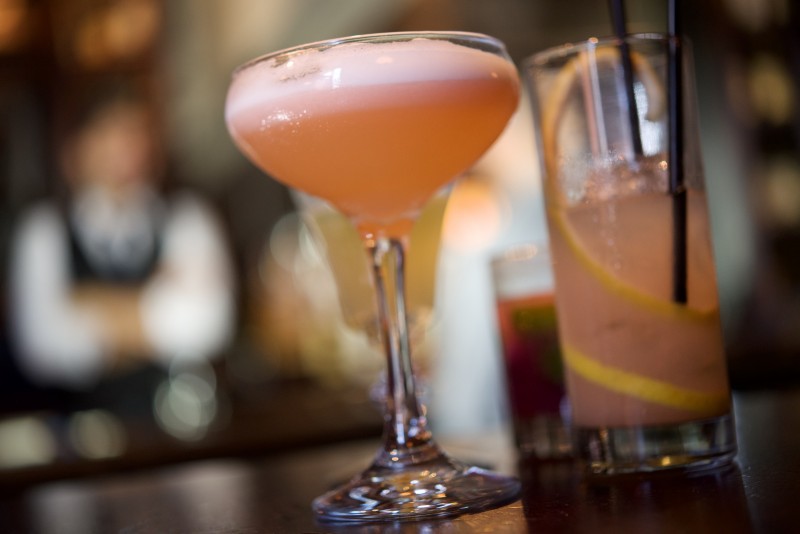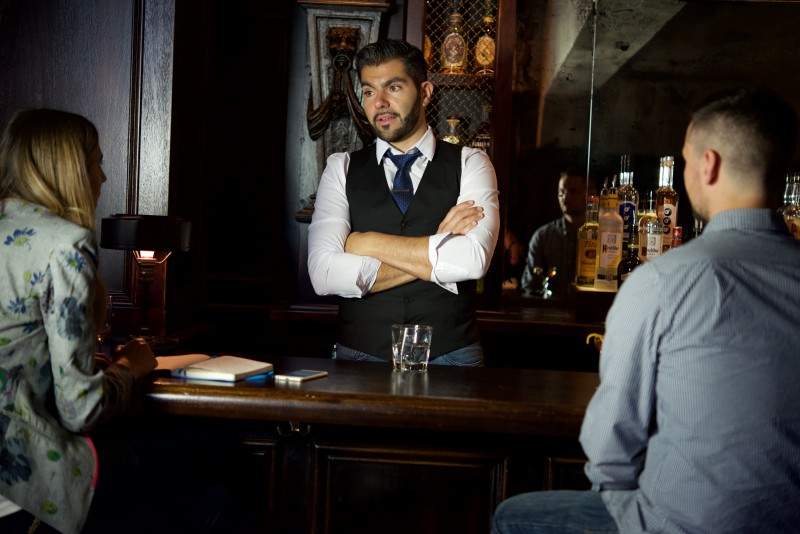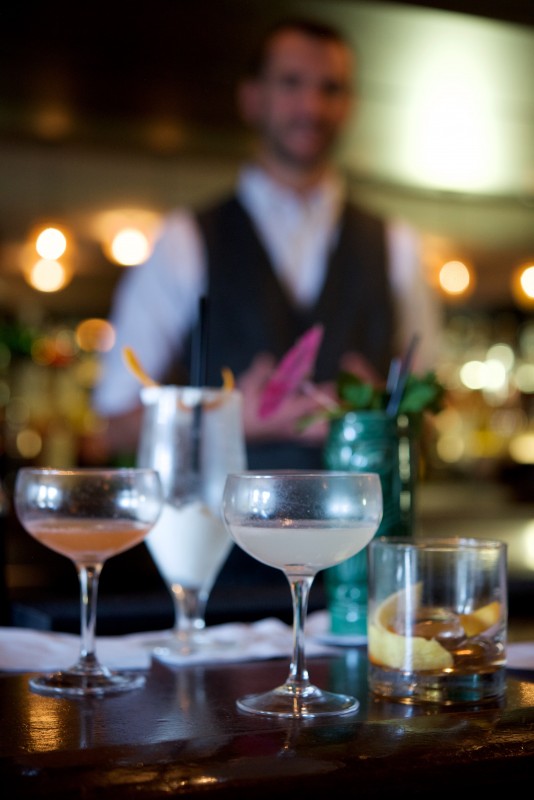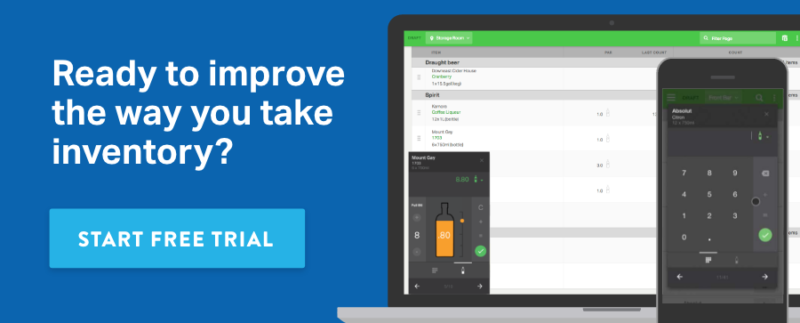How to Price Drinks to Achieve Successful Pour Costs
Fact #1: Knowing how to calculate and interpret pour costs is critical to your bar’s business.
Fact #2: Achieving a successful pour cost is almost impossible without pricing your drinks appropriately.
With hundreds of drink offerings across your wine, spirit, and beer program, and ever-changing product listings and customer preferences, pricing drinks can pose a significant challenge for bar management. Here’s a quick guide to solving it.
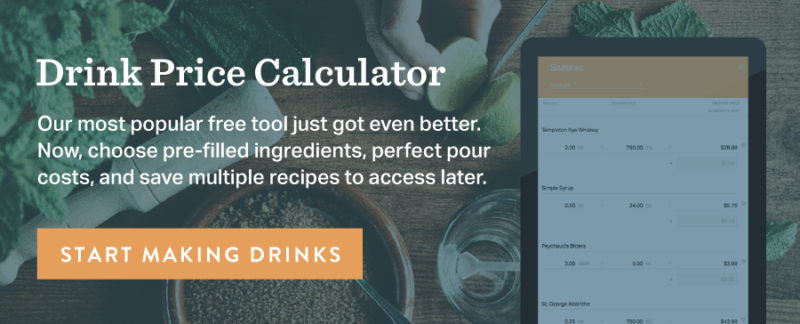
How to Price Drinks
To price a drink, calculate the cost of your drink by adding up the cost of ingredients. Choose a pour cost percentage (or profit margin) to target. Price the drink by taking the cost of your ingredients and dividing by the target pour cost.
Price ($) = Cost of Ingredients ($) / Target Pour Cost (%)
In a previous study, we’ve found that good target pour costs were 20% for beer, 14% for liquor, and 22% for wine. And when it comes to setting prices, our free Drink Price Calculator makes the math easy.
When pricing your drink menu as a whole, there are two additional considerations to keep in mind. As an example, we’ll use our own hypothetical bar.
BevSpot Bar: - $100,000 in monthly beverage sales - 50% spirits, 25% beer, 25% wine - 20% target pour cost
Always Think About Variance
First, we need to remember that variance (lost product or shrinkage) directly increases our pour costs. Any lost product, although not directly affecting sales, does factor into usage and therefore, pour cost. Since industry shrinkage hovers around 20%, we’ll want to factor this anticipated shrinkage into our pricing to ensure you have a cushion.
Pour Cost = Inventory Usage / Sales
If BevSpot Bar generates $100,000 in sales each month and wants to achieve a 20% pour cost, factoring in 20% variance means that the bar actually needs to price its drinks at an average pour cost of 16.67%.
It can be a bit confusing, but it’s an essential lesson in maintaining a consistent pour cost. By pricing drinks this way, BevSpot Bar would generate $16,670 in usage through sales which would be added to an additional $3,334 of expected variance ($16,670 x 20%):
$16,670 + $3,334 = $20,004 of total usage, yielding an actual pour cost of 20% ($20,004 usage / $100,000 sales).
Incorporate Sales Mix Across Products
The second thing to keep in mind is that our target pour cost of 16.67% is an average. To end up at this number, we need to incorporate how BevSpot Bar’s sales fall into different product categories and decide the best way to divide our pour costs. It likely wouldn’t work to consistently price all products across spirits, wine, and beer at 16.67%, knowing what our client base looks like and how our sales spread out. So how do we find the right target for each product category that will achieve average sales usage of 16.67%?
Given our customers and sales history (50% of monthly sales are in spirits), we know that we can achieve a lower pour cost in our spirits compared to our wine and beer, and our beer is going to be the least profitable. If we price our drinks on average to achieve a 10% pour cost on spirits, a 20% pour cost on wine, and a 27% pour cost on beer, we would achieve our target inventory usage of around $16,700:
(10% x $50,000 spirit sales) + (20% x $25,000 wine sales) + (27% x $25,000 beer sales) = $16,750 total sales usage
Mastering these two best practices will help you avoid falling into the most common traps of drink pricing. Combine that with a plan to reduce your variance and you’ll set yourself up for success.
Keep up to date with our Bar Management Series for more on driving lower liquor costs.
Schedule 15mins to chat with a product specialist
Start a FREE Trial Today! BevSpot offers full product education and account setup for all customers! No card Information needed!
5 Must-Try Restaurants in Boulder, CO
Boulder:
Famous for the University of Colorado, a known hippie scene, a typical college town in the middle of America. Lesser known to most is Boulder’s eclectic fine dining scene, focused on local, organic and sustainable cuisine.
As a CU alumni myself transplanted to Boston, people find it quite surprising to hear the two things I miss most about Boulder: the first being the weather (yes, Colorado’s winters are significantly milder than New England’s), and the second being the restaurant scene. It’s a dining scene that stems far beyond the delicious locally raised meats and produce, because even in a town that’s 1000 miles from the nearest ocean, the seafood selections—and even sushi—are second to none.
If visiting Boulder and escaping the college scene is your idea of good time, take a look at my top five spots for a great meal:
1. The Kitchen
Debuting on Pearl Street in 2004, The Kitchen is somewhat of a legend in Boulder neighborhood bistros. Not many small cafes see the national success The Kitchen has seen in recent years, but the expansion is no-doubt well deserved. Opening as the epitome of a neighborhood cafe, focused on the feeling of eating in one’s home and featuring weekly, family-style community nights, the restaurant has since grown into a Boulder sensation. With the opening of The Upstairs a few years later as more of a small-plates focused trendy bar scene, The Kitchen launched a journey to cover all dining needs in Boulder. Now they’ve expanded across Colorado, to Chicago, and heading soon to Memphis.
It’s been a crazy ride, but the restaurant is still focused on its roots: comfort foods, homemade pastas, delicious charcuteries, all served by a passionate team of connoisseurs.
2. Sushi Zanmai
Raw fish in a completely land-locked city may sound a little iffy, but Sushi Zanmai is on top of fresh fish with its daily deliveries. Focused on authentic Japanese cuisine without the Americanized spin on sushi, Zanmai offers fresh maki, sashimi, and nigiri in a fun setting. Their extensive list of daily specials and happy hour offerings sets the bar pretty high. And if the food itself isn’t enticing enough, they offer weekly karaoke nights and private tea rooms, perfect for any celebration.
Highlights include the Z #9 Roll, Firecracker Roll, and Purple Haze Sake.
3. Jax Fish House
Another restaurant at the forefront of group success, Jax was one of the first in Boulder’s own Big Red F Restaurant group. With four other locations opening in the last 20 years, and one Top Chef winner through its doors, Jax remains true to its focus on sustainable seafood since 1994. The west end Pearl Street restaurant also boasts an extensive raw bar, something few and far between in the town of Boulder.
Sit at the bar for one of the town’s best happy hours, including house infused martinis and $1.50 oysters—flown in daily from the east coast.
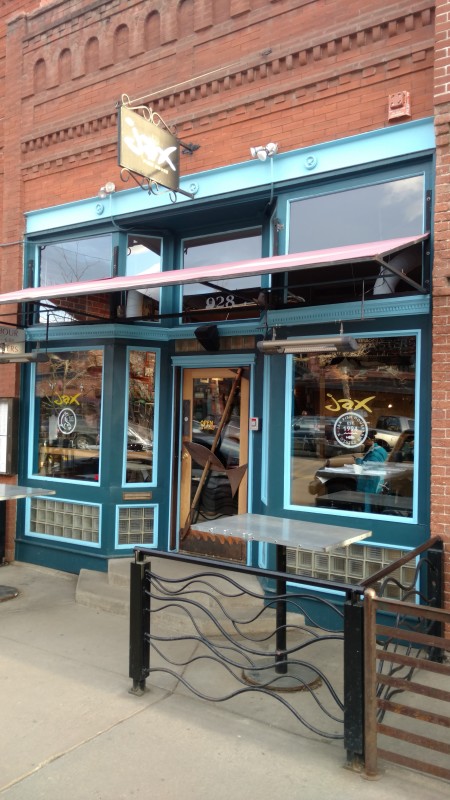
4. Frasca Food and Wine
Of all the fine dining in Boulder, you’d be pressed to find anything finer than Frasca. Co-Owner Bobby Stuckey lives and breathes wine. Holding one of 147 Master Sommelier diplomas in North America, Stuckey has quite a few prestigious awards under his belt including 2014’s Best Sommelier in the Country according to Wine Enthusiast, and the 2013 James Beard award for Outstanding Wine Service for the restaurant.
With Stuckey’s vision and innate knack for hospitality, complimented by Co-Owner and Head Chef Lachlan Mackinnon-Patterson’s Parisian culinary education and Michelin-rated restaurant background, Frasca has created a truly magical experience. The rotating farm-to-table menu is full of intricacies, all perfectly explained by an incredibly passionate staff.
Big date night or special occasion coming up? It doesn’t get more impressive than Frasca.
5. Brasserie Ten Ten
Perfect downtown location, Parisian-style outdoor patio, and a huge menu that includes everything from roasted bone marrow to pan-seared halibut. Brasserie Ten Ten has it all. Whether you want to sit at the bar with beer and football, have a classy dinner out, happy hour, or the perfect Sunday brunch of in-house baked items like eclairs, croissants, and cinnamon morning rolls, Brasserie’s got all your bases covered.
Some highlights include the classic French fare- think French onion soup, moules or steak frites, and savory crepes.
One thing you’ll quickly learn about Boulder is that happy hours are not just about the drinks. The food specials aim to please, and no matter what type of cuisine you’re craving, downtown Boulder has something to suit any mood.
Schedule 15mins to chat with a product specialist
Start a FREE Trial Today! BevSpot offers full product education and account setup for all customers! No card Information needed!
Spotlight on Paulo Pereira, Beverage Director at Brass Union
Somerville’s Brass Union has all the elements of a classic neighborhood restaurant—game nights, live music, classic fare that includes everything from cheeseburgers to market-fresh ceviche, brunch, monthly pairing dinners, local craft brews, and of course, innovative delicious cocktails. And behind those cocktails is the warm, friendly smile of Brass Union’s Beverage Director, Paulo Pereira.
I took a visit to this hidden gem in Union Square to chat with Pereira about his journey in the bartending world, upcoming events at Brass Union, and incredibly creative cocktails (think pecorino cheese infused vodka, and the longest lemon twist I’ve ever seen).
What is your favorite cocktail to make?
Sometimes it depends on the day, but if I had to pick one of my cocktails in particular, I’d probably say the ‘Satchmo’s Slur’. It has a couple different techniques to it, but I find it’s a really balanced cocktail that took some developing and time to get it to where it is. It’s something that I’m always proud to share with people. I know once they try it they’ll like it, so I’m always happy to make it.
Recipe
Satchmo’s Slur
Ingredients
- 1.5 oz rye
- 1 oz Lillet Blanc
- .75 oz Cynar
- 2 dashes orange bitters
- Herbsaint
Instructions
- Stir all ingredients except Herbsaint.
- Strain into an Herbsaint-rinsed coupe glass.
- Garnish with lemon swath.
What is your go-to drink of choice?
A glass of wine. Red usually. At the end of a shift, it’s just an easy go-to for me…crack open a bottle of wine and turn on the television.
What is your top must-have bar tool that everyone should have at home?
A good Boston Shaker. It’ll be the base of growing your bar tool kit at home…along with that you’ll also need a couple of different strainers, you’ll wanna buy a mixing glass and spoon, and then go from there.
What is your favorite bartending or customer story?
One of my favorite ones is from when I was working at Lansdowne. We used to get some celebrities in because it’s close to Fenway, and they had this little VIP room. One night I was over by the VIP room putting away some glasses, and I looked up and saw a bunch of Bruins players. Particularly, I picked out Tuukka Rask (this was some years back and at the time he was just a back up. I’m a big Bruins fan and I knew he was on his way up).
I just looked over and said “Hey, Tuuka!” and he was really really perturbed that I actually knew who he was.
So I took care of all those guys for the rest of the night; Shawn Thornton was there too. And they were just some of the nicest guys I’ve ever met. It just always stood out to me how somebody in his position would be so surprised that I would recognize him.
All time favorite food/drink pairing?
Margarita on the rocks (usually no salt) and nachos
Tell us about your personal journey and what led you to bartending?
I always had an interest in bartending because of the fact that my father had built a full-on bar in the basement of our home. He had a couple books, 5-6 different kinds of rums and whiskeys, and brandys and ports.
He would let me make him a cocktail here and there growing up. Even at an early age, I would try to create things, using some really syrupy and silly ingredients (I got that out of the way at a young age).
I actually ended up meeting my wife and she was in the bar industry. She saw my passion and she’d been doing it for years, so she got me my first “in” behind the bar at a place in Waltham.
How do you keep a fresh spin on what you offer in terms of your cocktail menu and your product portfolio?
I try to make sure that everything I carry in-house is something that I stand behind and would enjoy myself. I don’t want to be carrying something just for a brand name.
As far as keeping everything fresh, it’s just a lot of research. Getting out, going to visit other bartenders—there’s so many amazing bartenders and bars here in Boston in particular, but every once in awhile getting out to a city like New York, or even going up to Portland in Maine which has an amazing food and beverage scene—seeing what other people are doing, getting online, and just seeing what the overall trends are and what I can do to mimic that or to take a different spin on it here at Brass Union.
What is your biggest piece of advice for aspiring bar managers?
Work…work hard. Honestly. I feel like sometimes people feel entitled, especially once they get a title, and some people get that title too quickly of Bar Manager or Beverage Director…I still don’t feel like I’m worthy of it because I’m constantly learning and doing research and reading articles and picking up new books and trying to learn from Chef. Every restaurant that I go to I try to see what they’re doing and pick up on dishes and foods and drinks.
It’s just work. Spend the time. Do the research. Pick up a book. Instead of taking an hour to watch a television show, take that hour to pick up a magazine or get online. There are some amazing blogs out there that some of the best bartenders in the world write on a regular basis.
What specific books or other resources you would recommend to aspiring bar managers?
I’d definitely recommend a subscription to Imbibe Magazine.
As far as books, there are too many to name. If you’re thinking Tiki, get Potions of The Caribbean. I’d definitely pick up a copy of The PDT Cocktail Book, as well as Death and Co.
What is your favorite (and least favorite) thing about BevSpot?
My favorite thing is the support that you offer. From day one when I signed up, if I found anything confusing or if I just didn’t know what I was doing, all I had to do was send a text message and if not within minutes, then within a couple of hours, whatever it was that I asked about was either answered or someone was giving me a call to walk me through it. The support is definitely second to none.
My least favorite thing is that you guys weren’t around sooner. I definitely could have used you a lot sooner.
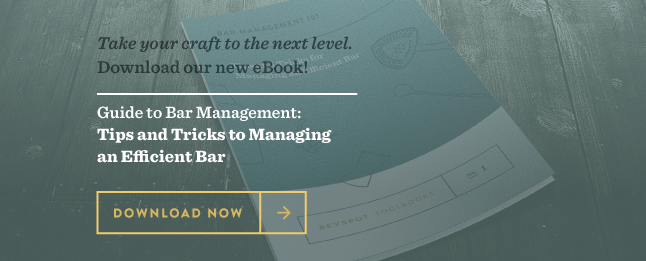
Spotlight on Ryan Lotz, Bar Manager at No. 9 Park
As the first in Barbara Lynch’s empire of Boston restaurants, as well as one of BevSpot’s earliest clients, No. 9 Park holds a special place in our hearts. Nestled in a townhouse on Beacon Hill, its intimate yet elegant dining setting is the perfect blend of classic, dinner party-esque with a touch of modern and trendy.
With an extensive wine program meticulously paired with chef’s tasting courses, the innovative cocktails might be overlooked. But behind those cocktails is Ryan Lotz, a master in the art of mixology—encompassing both an incredible passion and talent for the cocktails he creates, and the fine dining industry as a whole.
I sat down at No. 9’s bar to watch Lotz at work making some of his favorite concoctions and chatting about his journey in the bartending world, and advice for aspiring mixologists.
What is your favorite cocktail to make?
“You talk to any chef and they’ll say, ‘make an omelette,’ you talk to any bartender and they’ll say ‘make a daiquiri.’”
Lotz tells me his favorite cocktail both to drink and to make is the simple and classic Daiquiri, which he describes as the omelette of cocktails for its delicate nature in balancing the right ingredients. The classic cocktail is one that Lotz never tires of:
“It’s also a drink that has a horrible reputation as being a frozen, overly sweet, sugary drink served at a pool, but that is not the origin of this cocktail. This is the real version:”
Recipe
Ryan Lotz’s Daiquiri
Ingredients
- 3/4 oz lime juice
- 3/4 oz simple syrup
- 2 oz Privateer Silver Rum
Directions
- Shake
- Strain into cocktail glass
What is your top must have bar tool?
A simple necessity for Lotz is his bar spoon:
“Most people don’t have this at home, and you’re not going to have great success stirring a cocktail with a spoon you’d eat cereal with. A long thin spoon moves much more easily in a glass so it produces a smoother cocktail than something that’s jostling around and moving the ice. That’s something we talk about when stirring cocktails—how the ice and spoon move in the cocktail. You want to move those things without integrating any air, or without making any noise. It should be virtually silent when stirring a drink. So the tool you need for this is a bar spoon.”
However, Lotz concludes with one at-home hack if you’re missing a bar spoon: a chopstick.
What is your favorite bartending or customer story?
“I just love the people that sit at this bar. For a lot of us, we’re in it for that— for the hospitality. If we just wanted to make drinks, we’d find a different job, and then we’d make drinks at home. We have such great regulars at this restaurant, and they have such great stories. I’ve got people who have been sitting at bars of mine for years.”
Tell us about your personal journey and what led you to bartending?
As with many personal journeys, Lotz’ is one of fortunate accidents. Always a food lover, Ryan was raised on the values of home-cooked family meals. He worked at a Staten Island catering hall through most of high school, and moved to Boston for school, originally pursuing a degree in Art History and Business Administration.
Not loving the career path he was on, and needing some extra money, he tried out a couple server jobs. One restaurant eventually needed a bartender, so “they stuck me back there and taught me how to bartend.”
After graduating from BU, he took on more and more responsibilities and became the Bar Manager.
Shortly after that, Lotz’ big break came when Boston’s infamous Jackson Cannon approached him in assembling a crew to open The Hawthorne: “He took a liking to the cut of my jib, I suppose, and asked me to come bartend for him.” Lotz opened The Hawthorne with Cannon, “I met a lot of great people and learned a ton.”
Not long after opening The Hawthorne, Lotz had a conversation with the Bar Manager at No. 9 Park.
“I missed the true dining experience of having a full wine list and being able to serve someone a meal. That was why I got into the industry in the first place.”
Though he never expected to become the Bar Manager when he started at No. 9, the position opened up and he happily took on the role, “my bar team here is top notch.”
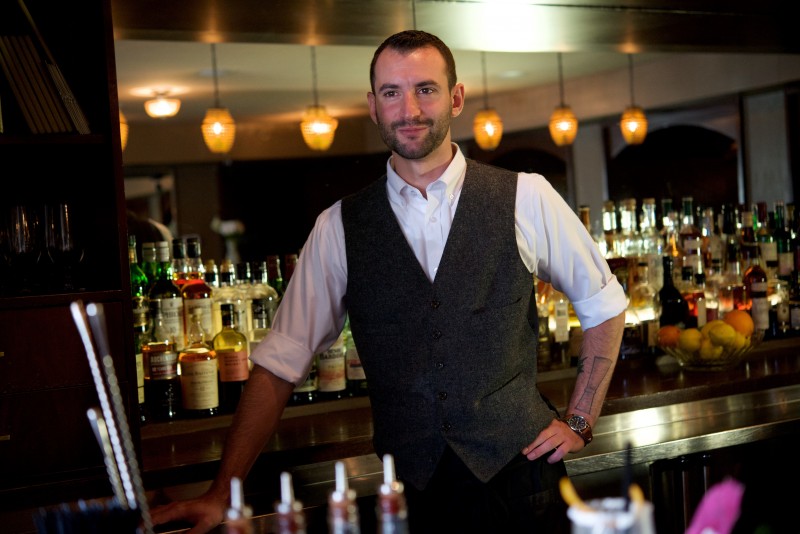
How do you keep a fresh spin on what you offer in terms of your cocktail menu and your product portfolio?
Lotz’ product portfolio and cocktail menu stem from many different influences, including people who approach him with products for him to taste, as well as Lotz himself staying on top of what’s going on around town. He’s also extremely collaborative with his staff at No. 9.
“All of my bartenders know that I want them to bring ideas or products that they want on the bar to me. We meet every 6 weeks to 2 months to test cocktail recipes and taste new products. We’re a team and I like them to be involved as much as possible…they’re making a lot of cocktails and always have ideas, so the menu is really just me corralling those ideas into a theme….the menu’s fun, the menu’s the easy part.”
“We try to keep it fresh and not recycle cocktails that we’ve used before.The list is moving to be more and more proprietary rather that what it used to be—just classics.”
What is your biggest piece of advice for aspiring bar managers?
“One of the skills that a lot of people overlook as a bartender is awareness, keeping your eyes open, keeping your ears open. Not only behind the bar but in life. If you want to make it in this industry, you need to build life experience. It’s a tough industry— you’re managing product, you’re managing people, you’re managing guests— that’s a tall order. You build that skill set by being aware of everything that’s going on around you and taking that all in and processing it.”
“Be self-aware. Opportunities in this industry present themselves even when you don’t realize they’re presenting themselves, there’s something to learn from everybody.”
What is your favorite thing about BevSpot?
“Seriously, inventory is like a breeze now. It used to be the most dreaded part of my job by a landslide. It still is not my favorite part of the job, but it’s gone from a 15-20 hour process to a 3-5 hour process. It’s pretty crazy.”
After a great compliment for BevSpot, and tasting many delicious cocktails, I’d call this a successful day spent with Ryan Lotz at No. 9 Park.
Visit our Craft page for more on Ryan’s favorite cocktails!
BevSpot Takes a Tour of Short Path Distillery
Comfortably nestled in between an old washer/dryer restoration company and a metal fabrication factory, Short Path Distillery rises from the ashes of a smoke-damaged rubber mill. Despite being open for just over two months, they’re quickly shedding their “new kid on the block” title as they earn the trust of local bars and liquor stores with their unique gin and rum offerings.
After speaking with one of the co-founders, Matt Kurtzman, it quickly became clear that the small period of time they’ve been open is merely a small slice of a much longer journey. We asked him to tell the story of Short Path. His first response?
“It’s kind of obvious, and a little bit nonsensical.” (tweet this)
I like this guy already.
How It Started
It all started four years ago when he and the two other cofounders, Jackson Hewlett and Zach Robinson, started Scotch Night, which, through the pooling of their money, allowed them to purchase expensive bottles of Scotch (that one person alone would be priced out of). But one Scotch Night in particular would live in infamy.
As they sat sipping their 21-year-old Glenlivet (if Matt’s memory serves him correctly), they had an epiphany: What would it take to actually make this stuff? The next day, they practically crashed Google’s servers trying to learn distilling fundamentals. They spent the following year in Jackson’s basement, testing and tweaking recipes. Eventually, they had come up with a business plan, and Short Path Distillery was born.
So, how did drinking Scotch lead to the inception of a gin and rum distillery? The answer is actually pretty clear (literally and figuratively). Because whiskey typically requires a minimum of two to three years of barrel aging, it takes a lot longer to see a return. Gin and white rum, on the other hand, don’t require any aging and can be brought to market almost immediately. Seems these guys have some business chops as well.
The Tasting
As passionate as Matt was about the story of Short Path, he was itching for us to get to the tasting. Didn’t have to ask us twice!
Gin
Style: American
ABV: 43%
Tasting Notes: Earthy, citrus, exotic, floral, menthol finish
Unlike the London dry variety which “smacks you in the face with pine needles,” this American style cuts back a bit on the juniper and leaves room for other botanicals to round out the flavor profile. It lets you know it’s gin, without yelling it in your face. And as much as I love a good gin and tonic, I’d be hesitant to pair this high-quality gin up with anything other than a dash of dry vermouth and a couple green olives.
Rum
Style: White
ABV: 40%
Tasting Notes: Bold, tropical fruits, vanilla, smooth
Admittedly, I was more excited about trying the gin, but I was pleasantly surprised after my first sip of rum. It was incredibly easy to drink. There was no bite-back. And for a second, I imagined myself sprawled out on a beach in the Caribbean.
Made with blackstrap molasses instead of the typical sugar cane, the mouthfeel is bold, almost like a Cabernet, without sacrificing any of the light and tropical flavors you expect with a rum. Since most of my rum experience in college was focused around Bacardi Limon and Captain Morgan, I never quite got into the sipping game. But after trying this dynamic offering from Short Path, I think it’s time to reconsider.
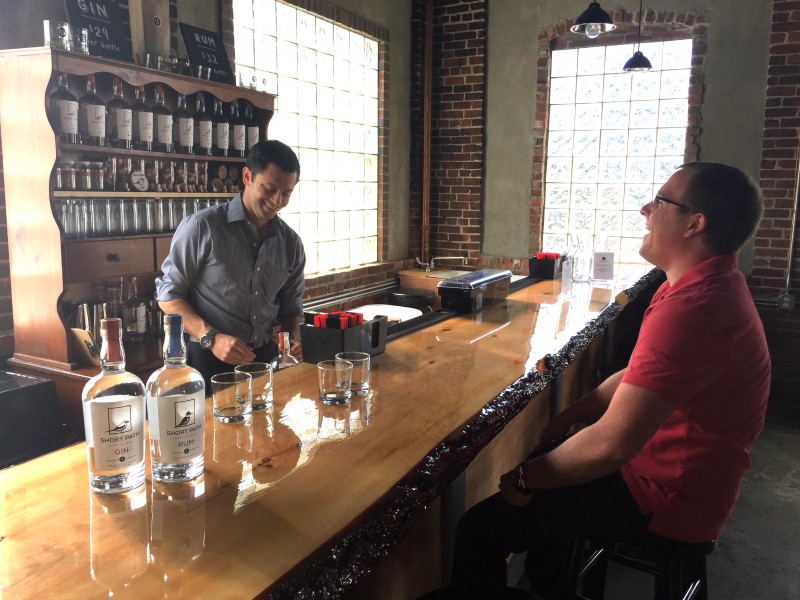
A Bright Future
Despite only being open for a few months, it’s obvious that this is the beginning of something special. Not only does Short Path Distillery make a great product, but they understand the inner workings of their business, and have embraced their spot in the Everett community. Their collaboration with Night Shift Brewing on events throughout the summer have already shown that. It’s only a matter of time before Short Path earns its spot on more and more bar and liquor store shelves. And, for the folks at BevSpot, that’s a wonderful thing!
Visit Short Path Distillery
Tasting Room Hours
Friday: 5p-10p
Saturday: 12p-10p
Sunday: 1p-6p
Village Fest
Saturday, September 19
Short Path & Nightshift Brewing
Live Music
Food Trucks
Rich Doyle on Enjoy Beer
Harpoon is a household name here in Boston. It’s our pride and joy of the craft beer movement—a nationally recognized brand, headquartered right here in our own little hub.
So it’s no surprise that its founder, Rich Doyle, is somewhat of a local celebrity. As a craft beer connoisseur and enthusiast at heart, he’s also an innovative entrepreneur who knows how to build a lasting business.
We caught up with Rich last month to discuss his latest venture, Enjoy Beer, and also to chat about the history and future of the craft beer movement.
What is Enjoy Beer?
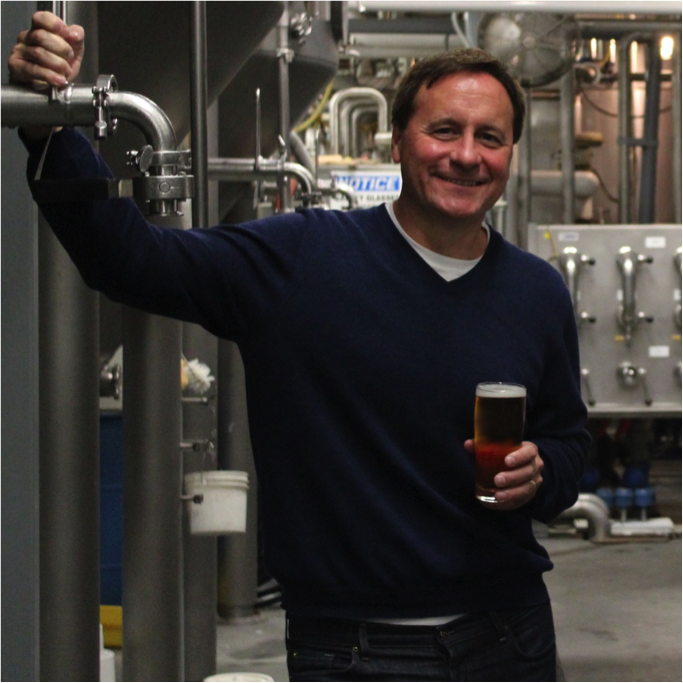
“What we’re trying to do is help breweries that have been successful and have already had some scale, have demonstrated a strong regional and local following, and basically allow them to continue to be competitive,” Doyle explains of Enjoy Beer, which he launched earlier this year.
Due to the immense growth of the craft beer industry, brewers have a greater opportunity than ever before, but due to competition, it can be hard to grow beyond a certain level. According to Doyle, local breweries need to deal with competition both above and below them. Specifically, “above them are the international strategic players that have huge scale advantage in production, distribution, sales and marketing, and capital. And then underneath them, as the world of consumer products gets more and more localized, you have super local microbreweries who nip away at your local standing.”
The growth of craft beer has gotten to a point where even at a local level, you may be too big to be the local go-to, while also being far from large enough to compete with the big guys, “take a city like New York for example—it’s become difficult to be ‘the beer of the city’ because now there are people in a borough or a block or a neighborhood who take away your claim to represent that city.”
“What Enjoy Beer does is allow small craft breweries to continue their success and growth in a local market by giving them resources and access to scale,” says Doyle.
What Enjoy Beer does for Local Craft Breweries
Doyle describes a number of ways in which Enjoy Beer can help cross the chasm from local brewery to the next level of scale. Selling to national accounts is one way, which Enjoy Beer helps achieve through existing relationships, multi-brand negotiating leverage, and experience in market research and analytics which local breweries typically don’t have access to.
Streamlining operations with salesforce integration across Enjoy Beer’s brand relationships is a key growth factor as well, explains Doyle, as growing a salesforce becomes much more complex, and expensive, when expanding into secondary markets: “They can handle the competition and scale disadvantage in a local market, but when they get into the regional market they get multiple states away from their home base and can become much less profitable pretty quickly. Some of that has to do with the scale of the salesforce, either spread out too thin to be effective, or it is concentrated but they’re not very profitable.” Doyle’s team is helping to solve this problem by enabling partner breweries to utilize Enjoy Beer’s national presence and salesforce relationships in each specific market.
Enjoy Beer also advises on brewing best practices and quality control, as well as wholesale management, either in existing markets or for expansion, “we can create a certain amount of negotiating leverage by having multiple brands.” Through its common ownership economics, Enjoy Beer also presents an opportunity for craft breweries to diversify across regions and brands, providing upside exposure to other partner breweries.
Advice for Regional Brewers
There’s a generally accepted belief that the craft beer industry will double over the next 10 years, an important trend to keep in mind when considering options for growing with the market. But, although the growth rates predict a positive outlook for the industry broadly, this doesn’t apply to everyone, and as Doyle explains “there’s no crystal ball and no one knows who is going to grow that way. Each brand will not grow according to the industry growth rate.”
Partnership is a valuable path to consider, and when doing so, Doyle advises to think about priorities in terms of control, “one of the issues that comes up pretty quickly is control. So I always talk about ‘control of what?’ What specifically don’t you want to give up control of? There are trademark laws, parking spaces, compensation, what goes in the bottle, what name is on the bottle, there’s a whole range of things. And when you start talking about that, you realize you really care about some things and are willing to give up others.” Knowing where your priorities are can help with building a platform for long-term partnership.
Of course, one option to consider is partnering with Enjoy Beer, which offers independent breweries the best of all worlds. It’s an opportunity to run your own business strategically, having the resources to really scale, without giving up control of your brand.
For more information on Enjoy Beer, visit http://www.enjoybeer.com
Rich Doyle on the Craft Beer Movement
A World of Beer Connoisseurs
The concept of being a “beer lover” has changed greatly in recent years. Having a love for kicking back on the sofa with a cold brew doesn’t quite cut it anymore. There’s a new passion in the air—that of craft beer. The true beer lovers are those who are choosing where they eat their next meal based on the restaurant’s beer selection. They’re on top of all local breweries, even visiting them regularly. They know (and love) all kinds of beer stemming far beyond what’s dark or light, loving wheat beer, sour beer, stouts, IPAs, and everything in between. They’ve attempted, or at least thought about brewing their own.
They probably scoff at the days of drinking cheap beer out of a keg in college.
A Slow Shift Toward Craft
According to Rich Doyle, former CEO of Harpoon Brewery and current Founder & President of Enjoy Beer, the amount of people drinking craft beer has grown from less than 1% of the market to 11%, and is well on its way to 20%, all since the founding of Harpoon in 1986.
Doyle, a big mover in the craft beer industry, was truly at the forefront of craft brewing when he started Harpoon and witnessed the rise of craft beer “from a hard-to-find oddity to completely mainstream.” The industry is a whole new world. As the number of people drinking craft beer dramatically increases, so too does the opportunity for craft brewers to sell a lot of beer and really build a valuable business.
We caught up with Doyle to chat about this fascinating shift in the craft movement. As a true innovator in craft beer, Doyle first-hand witnessed this shift from the inside, “Back then, people didn’t know what IPA was. They’d ask what white beer is, or why a beer is so cloudy, why put spices in it at all? It was hard to believe the beer world even existed.”
Right around the time Harpoon started, people thought of beer on a very narrow spectrum says Doyle, “it was just flavors and colors—pale, straw colored, pilsner, lager. People thought of beer as just a narrow swap of what it actually could be.”

The Value of Quality
So what causes such a shift in taste and perspective? “People believe that all products and services either have to be better or cheaper than their alternatives, that’s kind of how we survive. The fact is, craft is better. Choices are better. Ingredients are better,” says Doyle, “Think of it like a high quality European coffee versus a mainstream coffee.” Of course, having more accessibility due to an increased availability in craft products makes a huge impact, but as Doyle says, “it’s really more about appreciation for how much better it is than the alternative.”
When you really look at the difference and compare the alternative, it’s quite surprising that it’s taken this long for the market to pick up on the trend, “the selection is so different, the quality the flavors—it’s amazing mainstream beers have managed to stay competitive for so long,” Doyle says of the delay in the mainstream acceptance of craft beer, “over time, America literally went from being a beer laughing stock to being the best place to drink beer.”
A Brewer’s World
The ever-apparent consumer shift is just one contributing aspect in the growth of craft brewing. As the market gains momentum in its acceptance and appreciation for the craft, the business model for a brewer changes completely. Access to capital equipment is much more readily available with a larger range of suppliers, as well as a broad range of materials, “there’s been an explosion in different kinds of hops you can use,” says Doyle.
With more accessibility come more breweries, and therefore more competition. While the barriers to entry are lower, the expectations are very high. “Customers are no longer willing to live with the warm and fuzzies. You need excellent product from day one, a great understanding of how to work with wholesalers from day one, and functional areas need to be handled well from the start. That’s packaging, marketing, sales management. You have to bring your A-game right away” says Doyle. “Yes, there’s more access to capital, but you better use it well. It’s a whole new world.”
A whole new world indeed when looking back on the days of Doyle founding Harpoon, “we never had more than about a million dollars worth of equity capital. Back then you could start a business for that. Today, it’s more like 10 million.”
Over time, craft beer has become an integral part of American culture, one that’s clearly not going away anytime soon. As the industry grows from the inside, so too does the mainstream acceptance. Possibilities are endless, as we see more and more craft collaborations emerging, lines become blurred and more options present themselves. It’s an exciting place to be and we look forward to seeing what the next 10 years bring.
Thanks for chatting with us Rich!
BevSpot Is Helping Bars and Restaurants Take Control of Their Inventory
We connected with Lauren Landry, contributor for Boston Magazine’s online content. Lauren interviewed our CEO and Co-founder, Rory Crawford on the story behind BevSpot’s launch, the journey since, and what’s in store for the future:
“’One of the core components of our business was to build a world-class technology business, not just an alcohol company,’ Crawford explains. ‘Restaurants and bars are very complicated, hard-to-run businesses. It’s a competitive industry…with no visibility as to who’s coming in tomorrow…’
BevSpot has 150 accounts on its roster now—125 of which are local, including No. 9 Park, Lincoln, Catalyst, and Loco. Each pays a monthly fee, starting at $149 per month, for access to the BevSpot software. There is no setup fee, and the subscription can be canceled at any time. ‘We stand on the product,’ Crawford says. ‘If it doesn’t change your life for the good, you don’t owe us anything.’ […]”
Ordering Dynamics and Reducing Shrinkage
Dealing with shrinkage or lost product
Among the many challenges that go into managing a bar or restaurant is dealing with shrinkage or lost product, a huge profit drainer. According to beverage auditing companies Beverage Metrics and Stock-Taker, industry average shrinkage rates are 25%, and the National Restaurant Association reports that 75% of shrinkage is due to theft.
While many restaurants and bars focus on inventory control systems to reduce shrinkage, reconsideration of ordering processes can be even more helpful. These simple tips will help you make smarter purchases that reduce shrinkage, and ultimately generate greater profits for your establishment.
Avoid Purchasing Based on Quantity Discounts
We know it can be difficult to resist a good deal. And while it might seem like quantity discounts increase overall profitability due to the potential of reducing your cost per ounce, factoring estimated shrinkage into the equation will directly counteract these cost reductions.
Let’s assume a regularly priced case of vodka costs $200 and the distributor is running a 2+ case quantity discount that grants you 10% off each case if you purchase 2 or more.
Despite only needing one case, that 10% discount is too tempting, so you buy two cases for $360 (2 x $200 per case – 2 x $20 discount per case). Instead of spending $200, you end up spending an additional $160 and getting twice as much product.
SEE HOW BEVSPOT CAN HELP YOUR BAR
If we assume 25% shrinkage, $40 (25% x $160) of this additional product will be lost. Since the $40 loss is equal to the total discount you received in the first place, shrinkage ends up wiping out any cost benefits of the order. Top it off with the extra space and time needed to count the additional product, and that good deal suddenly feels like a rip-off.
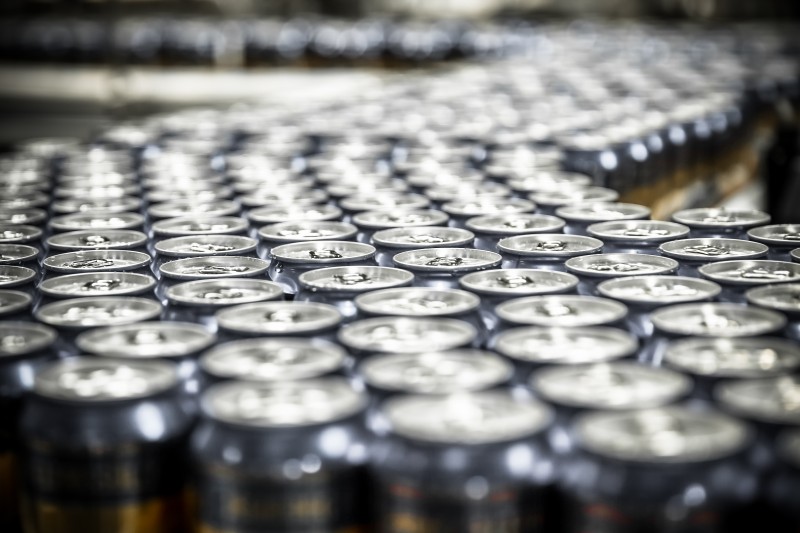
Purchase to Reduce Sitting Inventory
Since shrinkage takes the discount out of Quantity Discounts, how can you increase profitability with smarter ordering? Focus on one key goal when making purchase decisions: reducing sitting inventory.
If you have $40,000 in inventory and sell $10,000 of product each week, you have 4 weeks worth of sitting inventory on hand. By reducing your sitting inventory to $30,000, you will not only gain $10,000 back in your pocket, but you will also reduce your shrinkage by $2,500 (25% x $10,000). Remember that if 25% of any product you purchase will be lost to shrinkage, the less product you have on hand the less you lose, and therefore the greater your profits.
By only ordering product that you absolutely need, you will quickly reduce your sitting inventory levels, increase your bar’s efficiency, reduce shrinkage losses, and increase your bar’s overall profitability.
Schedule 15mins to chat with a product specialist
Start a FREE Trial Today! BevSpot offers full product education and account setup for all customers! No card Information needed!
3 Steps to Building a Product Portfolio
Since we’ve already discussed sitting inventory, usage, and pars, let’s take a step back and look at how to actually come up with an optimal product offering in the first place. BevSpot’s catalog has over 50,000 products, 9,000 being spirits. So how does one decide between these 2,700 vodka options, 1,200 rums, and 800 different scotches? Factor in the sheer number of products you are likely offering, and the fact that consumer preferences are constantly changing, and you’ve got a pretty challenging task on your hands.
These 3 simple steps will help you decide what product to offer by delving into what your customers really want, using usage calculations.
Step 1.
Calculate Usage at the Product Type Level
Ever wonder why you have three times as many whiskeys as vodkas, and if that’s the right decision? To get a better understanding, calculate usage for all of your spirits and compare the total usage for each product type to see exactly how much vodka, whiskey, rum, and other spirits you are selling in any given period of time (weekly, monthly or otherwise).
SEE HOW BEVSPOT CAN HELP YOUR BAR
These numbers provide you direct data on your customers’ preferences. For instance, if you’re selling $5,000 worth of whiskey and only $2,500 of vodka each week, this likely means that twice as many of your customers prefer whiskey over vodka (or, maybe whiskey drinkers just drink more, also helpful to know.) In considering how best to serve your customers, this type of data is incredibly valuable.
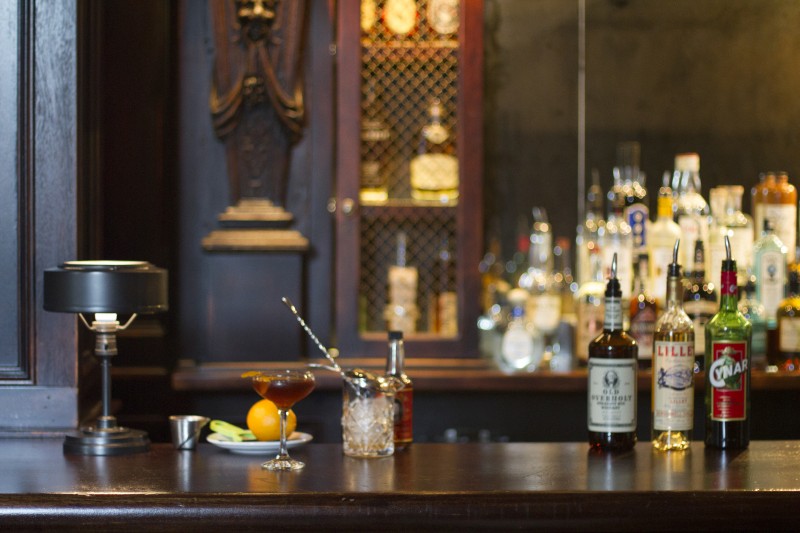
Step 2.
Decide How Much of Each Product To Carry Based on Relative Usage
Now that you know how much of each type of product you’re selling, divide these usage numbers by the total usage for your bar. This will give you the percentages of product you should allocate to each specific product type.
For instance, if you sell $20,000 in spirits each week, and $5,000 of that is in whiskey, you might want to consider making 25% of your spirit product offering whiskey. If your goal is to stock 100 different spirit products, then this data suggests that 25 of those products should be whiskeys.
Apply this same process to all of your product types to see how much of each spirit type you should be stocking. Of course some personal judgment is involved, but by leveraging customer data you can easily identify preferences that will allow you to better cater to your customers, while also reducing your sitting inventory.
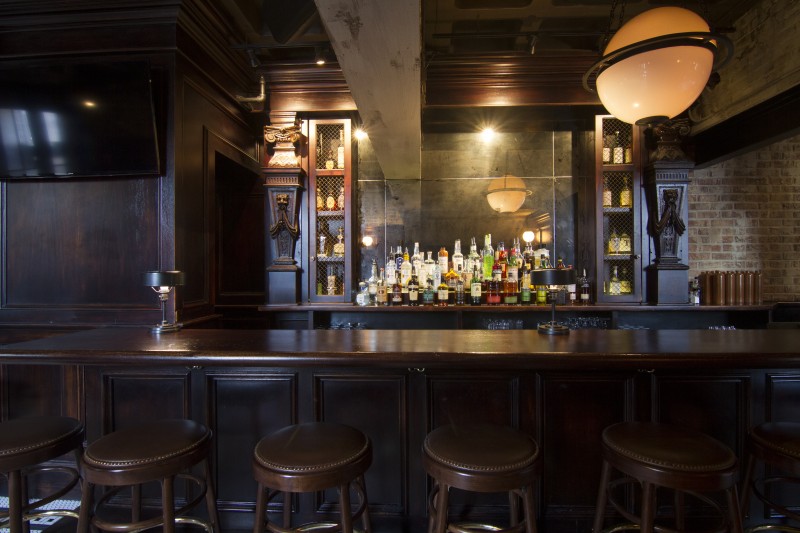
Step 3.
Use Specific Product Information to Add or Remove Products
Now that you’ve decided how much of each product type to carry, you can drill the data down even further and look at specific bottles and brands to gain a better understanding of which to keep and which to move off the menu. The easiest way to do this is to simply sort by usage and remove the slowest moving product. For instance, if you decide to carry 10 different rums and you currently have 13 different types, remove the three bottles with the lowest usage. This will increase the efficiency of your rum portfolio and bar overall.
To ensure that you’re catering to customers at various price points, use the cost per ounce (bottle price / ounces in the bottle) for your products in each group to ensure that you have low, medium and high price point options. This way, every customer with a preference for a certain type of product has a perfect option!
Creating an optimal product portfolio for a bar takes a great deal of personal judgment and a deep understanding of your customers. Try taking some of the trial and error process out of it by applying hard customer data that enables you to make better decisions that cater to your customers, improve sales at your bar, and save you on upfront costs.

6 Truly Bostonian Cocktails
Bostonian Cocktails
Let’s face it, we live in one of the most cultural and spirited cities in the world. Boston’s pride is an unbreakable bond, and our local establishments celebrate the city in many different ways. One great nod to Boston? Creating a tasty drink inspired by and named for our wonderful city. We went out on the town in search of Boston’s most Bostonian cocktails, so the next time you’re out and about feeling strong with your Boston pride, you’ll know where to find the most spirited cocktails around:
Start Your Free Trial With Bevspot Today!
The Spot: Scholars
The Drink: Smirnoff Boston Tea Party
What’s in it: House infused honey peach tea, splash of citrus
Why should Long Island have all the fun? Tea is a major part of Boston’s history, and nothing commemorates that more than a great house-made tea infusion.
The Spot: The Fireplace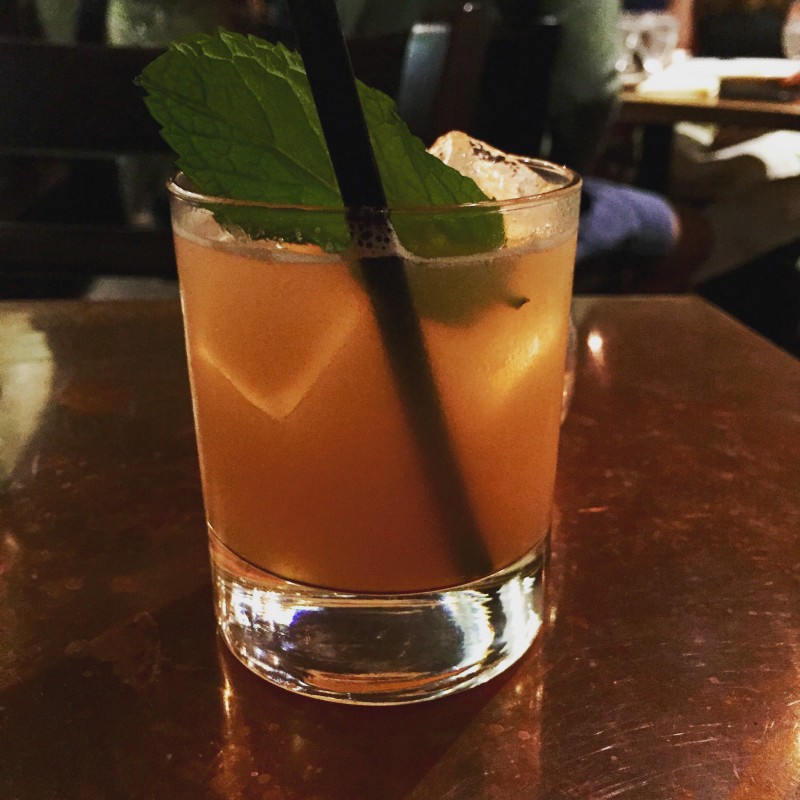
The Drink: Brookline’s Finest
What’s in it: Muddled peach and mint, Bully Boy whisky, lemon
OK so this one’s not exactly “Boston” per se, but we all know that one of the best things about Boston is venturing out to our other surrounding foodie neighborhoods. And this cozy spot uses one of our favorite local distillery’s whisky, adding peach for some sweet tang and mint for an herbaceous finish.
The Spot: Bell In Hand
The Drink: Paul Revere Punch
What’s in it: Captain Morgan white, Gosling’s rum, orange, cranberry, pineapple juice, garnished with an orange slice and cherry
It doesn’t get more Boston than this. Faneuil Hall’s Bell In Hand Tavern has been a destination for a cold drink and hot meal since 1795. Cross that with one of Boston’s most historic figures, Paul Revere, and you’ve got yourself a deliciously fruity Boston-themed cocktail.
The Spot: Pier 6
The Drink: Southie Southside
What’s in it: Grand Ten Wireworks gin, Soho lychee, simple syrup, mint, cucumber
A delicious local gin from Southie’s own Grand Ten and panoramic waterfront views of the Boston Harbor. That’s the Southie way…and we like it.
The Spot: Stephanie’s on Newbury
The Drink: Back Bay Basic
What’s in it: Tito’s handmade vodka, St-germain, citrus, stirred and topped with prosecco
We couldn’t possibly ignore Boston’s favorite shopping destination, Newbury Street. Nothing captures the true cultural beauty of Boston quite like the classic Back Bay brownstones, and sitting outside on Stephanie’s Newbury Street corner is the perfect way to take it all in, especially with this drink in hand.
The Spot: The Landing at Long Wharf (Boston Harbor Cruises)
The Drink: Patriot Passion
What’s in it: Bacardi DragonBerry, cranberry juice, lemonade
How can we talk about Boston’s spirit without acknowledging our amazing sports teams? This one, named for New England’s football team, will not disappoint. Found at one of Boston’s only truly outdoor bars, this fruity cocktail is sure to instill a passion for our city.
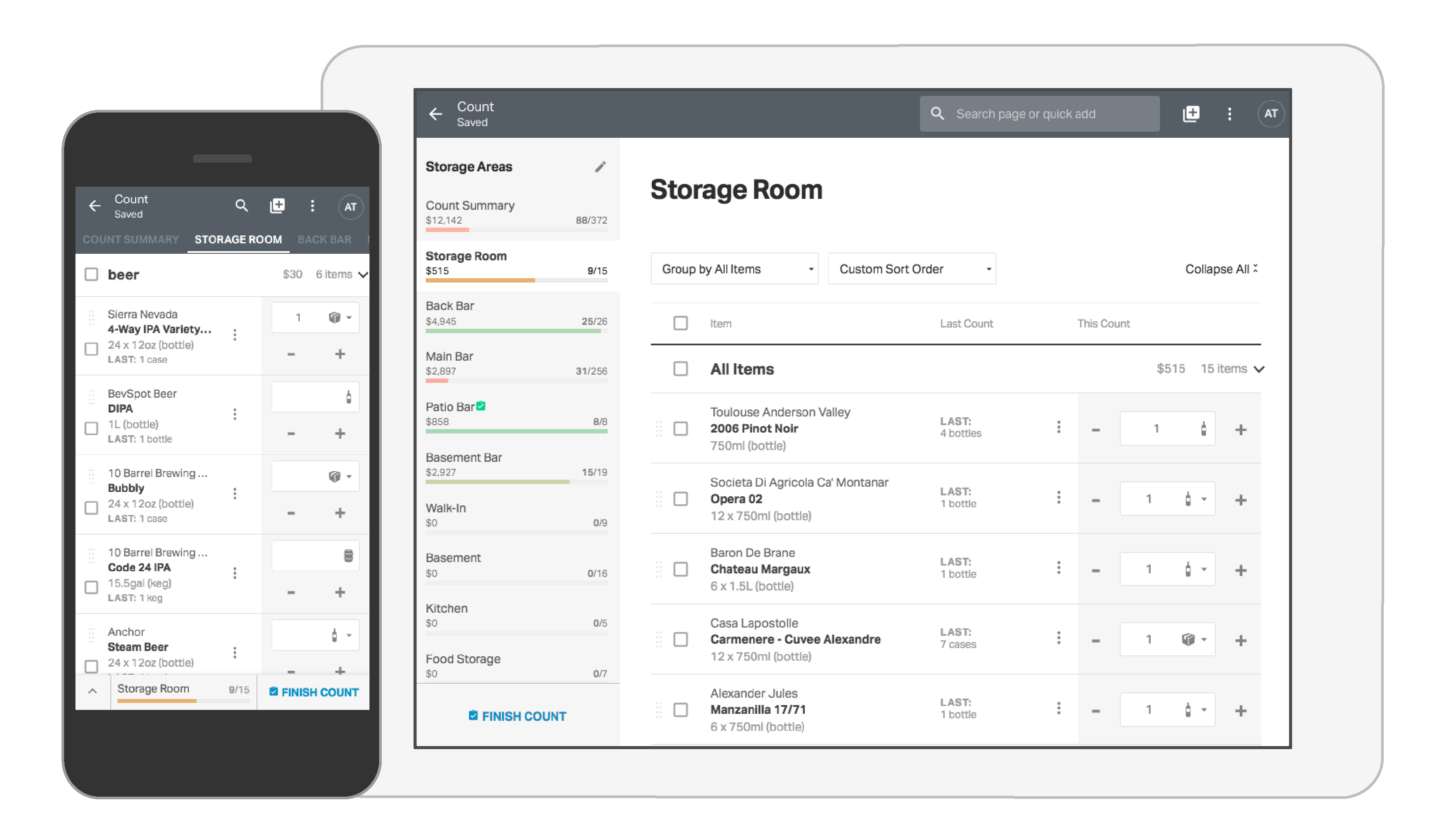
Schedule 15mins to chat with a product specialist
Start a FREE Trial Today! BevSpot offers full product education and account setup for all customers! No card Information needed!
Boston Harbor Distillery
A Local Craft
Local craft distilleries encompass an essence of magic. As soon as you walk in, there’s an aura in the air that something exciting is happening with each and every passing moment. That feeling rises to a whole new level upon entering Boston Harbor Distillery, the city’s newest craft distillery.
The source of the magic is hard to pinpoint. It could be the perfect blend of modern industrialism in the design, or the light that streams through the windows and skylights and bounces off the mixed metal light fixtures, wooden beams, and exposed brick. Maybe it’s the small historical elements that honor the commercial industry of the area. Then of course, there are the relationships—the bond between a team built on genuine mutual respect, blood, sweat, and tears, and an ultimate passion for the industry. And finally, there’s the creativity of the craft spirits, made from heart and soul in this very building.
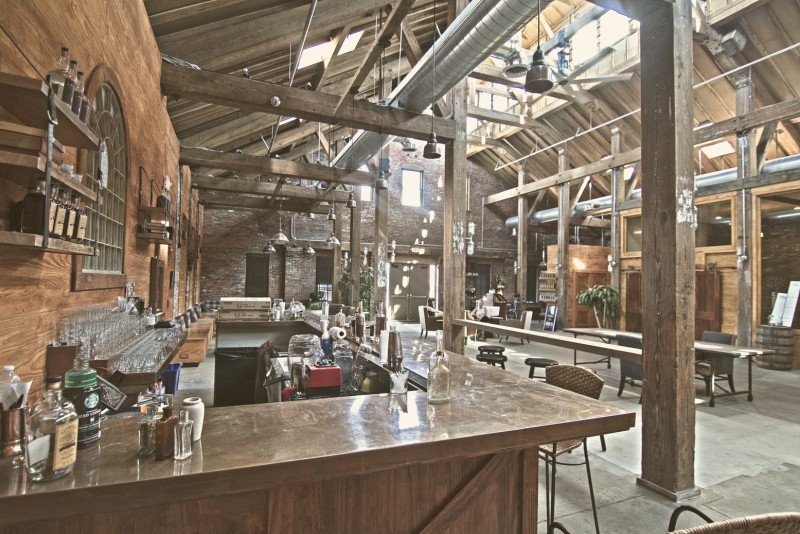
Earlier this month, Alex and I were lucky to be able to tour the new Boston Harbor Distillery, taste the spirits, and chat with founder and CEO, Rhonda Kallman.
Kallman, a founding partner of Sam Adams’ brewery, Boston Beer Company, knows her craft very very well. Entering the business in 1984 and being at the forefront of the craft beer movement, this next project is both different and extremely exciting for her. And the energy of the craft distilling movement is pumping through her veins. She glows as she welcomes us into her pride and joy, with a genuine eagerness to show off what’s in the works.
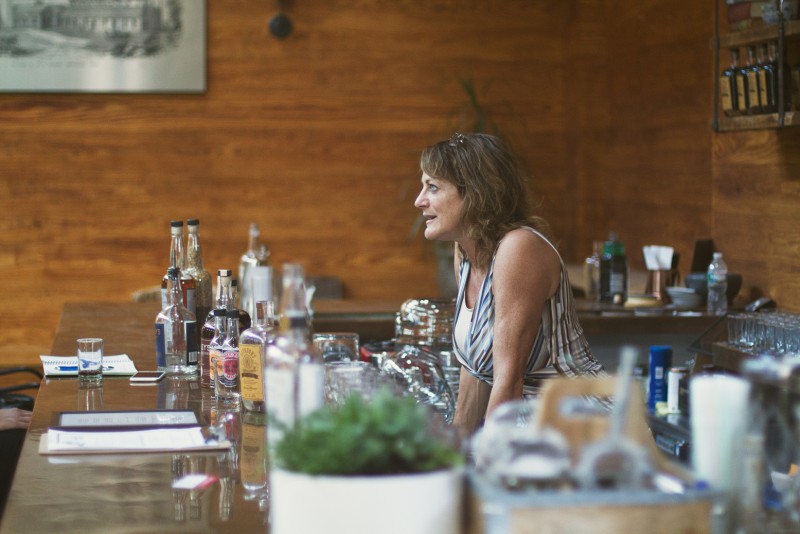
The History
As we make our way to the tasting area, Kallman shows off the historical elements of the space, originally at the forefront of entrepreneurial commerce. We admire maps and old sketches paying homage to 19th century companies like Putnam Nail Company, shipbuilders George Lawley & Son, and Seymour’s Ice Cream Company. That entrepreneurial spirit—making a difference and becoming a piece of history, is exactly what Kallman wants for her distillery, as she says of the industry, “we’re right where craft beer was 10, 15, even 20 years ago. This is the future.”
After 30 years in the brewing world, Kallman, always a whiskey drinker, has come full circle, starting from scratch and distilling unique spirits both aged and unaged, incorporating distinct flavors and one-of-a-kind collaborations. As we make our way to the tasting table, I admire the high ceilings and beautifully lit space, fantasizing about how perfect it would be for an event space. Kallman is quick to tell me that they plan to host private events, and have already thrown some industry parties.
Duly noted.
From Brewing to Distilling
Kallman sets out to revolutionize spirits,
“I was in the beer business for three decades, but I don’t know distilling. That’s the beauty of it. I’m not an ex-distiller, so feel like I have carte blanche to redefine the rules. To me, there are no rules, as we are starting from scratch.”
As we head toward the barrels and still, where the magic happens, John Couchot, Master Distiller, joins us. Formerly at Rogue Ales, his extensive background in brewing and distilling blends perfectly with Kallman’s. Observing the witty banter between the two, you’d think they’d been working together for decades, and in some ways they have, joining the industries around the same time and working separately, though toward the same cause—that of the craft movement. “Rhonda comes to me, the legacy of Sam Adams, and I learned how to brew from the owner of Sierra Nevada…I was at Rogue, I worked with Dogfish. We both learned to do what we’re doing from the forefront,” says Couchot, as he and Kallman reminisce and compare the years they started their careers, smiling, “it’s been a long time.”
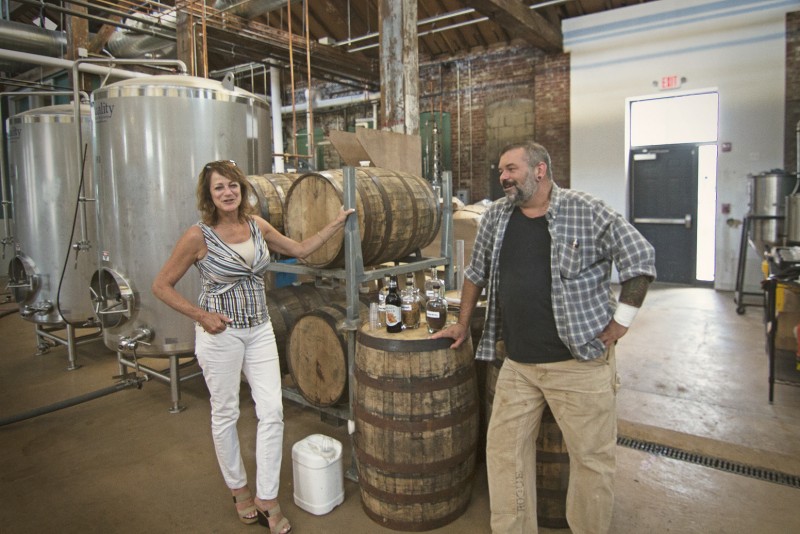
You’d almost think they’d never discussed this before.
On Products
We take a taste directly from the barrel of Couchot’s latest creation, a limited batch collaboration of distilled Sam Adams Merry Maker Gingerbread Stout that for now is called the Spirit of Boston, highlighting the special connection between Boston Harbor Distillery and The Boston Beer Company (more on that soon). “I could just smell this all day long. I think it’s the best spirit I’ve ever made. It’s the most complex, unique, really spectacular, and I am the biggest critic of everything I make. I hate it all,” Couchot says, as we compare taste notes.
As I wonder how he would convey his intentions and these flavors to potential customers, he tells me
“it’s about enjoying it. I’m not going to tell you what to think or how to drink it. It’s a different experience for everyone. For me, this drink is New England Christmas. And I’m not even from here, this is just what I picture the holidays to be.”
The complexities of this collaboration raise plenty of questions, “these are the ‘what the hell is it?’ of spirits. It’s not whiskey because it’s flavored, but it’s not a flavored whiskey…we don’t even know what to call it.” As Kallman said, there really are no rules.
But what about a staple like the distillery’s own Putnam Rye (named for the aforementioned Putnam Nail Company)?
“When I taste the rye I think of these barrels and all the signatures,” he says as we admire the collage of names across the whiskey barrels, “it represents the support of the community. Everyone of those names…family, friends, politicians, an 11 year old boy [his son].” Adds Kallman “a movie star, parents, sisters, loved ones, investors…blood sweat and tears, in short.”
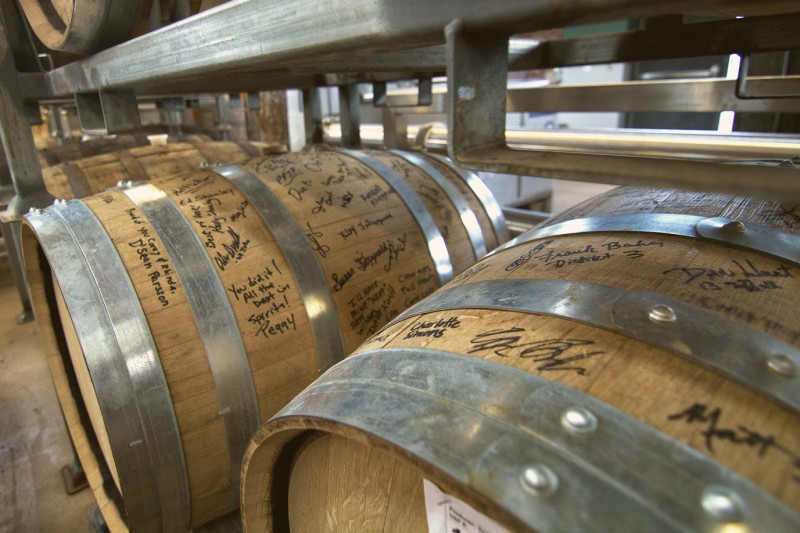
On the Future of Craft Distilling
Kallman has truly come full circle. Just as she was at the forefront of craft brewing 30 years ago, today she is at the forefront of craft distilling, and just like back then, her goal is the same: “I was in the beer business for 30 years. Just like I’m doing now, I wanted to do something different. Something the other 3,700 breweries weren’t doing,” (and she is clearly on the right track based on what I saw and tasted).
Currently, there are 20 craft distilleries in the state of Massachusetts, and while there is an air of competition among them, there’s also camaraderie,
“when the tide comes in all the boats rise. Look at Napa and Sonoma. They got together as an industry and became important, the core here is educating people, like we did with beer years ago. People scoffed at dark beer, ‘we don’t drink daaaark beer!’ and the industry thought it was a fad. But it didn’t go away, and it never will.”
And that is what the craft movement is all about—pushing each other to offer something with a point of difference that drinkers will find interesting, something truly great, that will keep them coming back,
“it’s caring about what’s inside the bottle—passion and integrity that goes into every bottle. That’s what craft is.”
Schedule 15mins to chat with a product specialist
Start a FREE Trial Today! BevSpot offers full product education and account setup for all customers! No card Information needed!
Photo Tour: Bully Boy Distillery
Rachel and I recently visited Charlie and Oliver over at Bully Boy Distillery to get a fun history lesson on their new Hub Punch (you can read Rachel’s full writeup here). Here are some images from the visit…
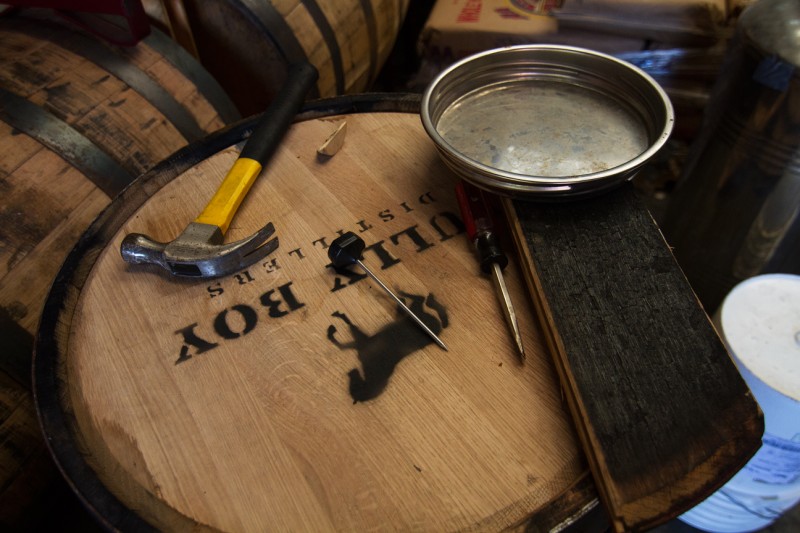
Tools atop a barrel awaiting spirits in their stock room.
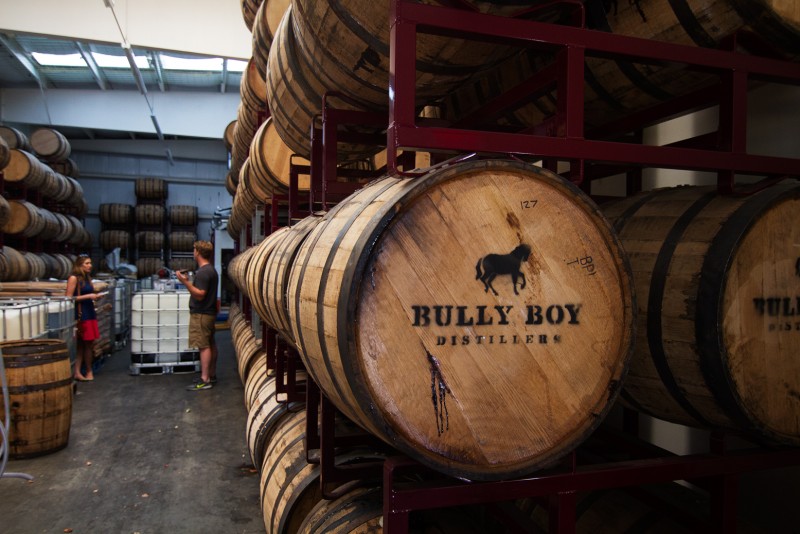
Charlie explains their process amidst lots of barrels of delicious spirit.
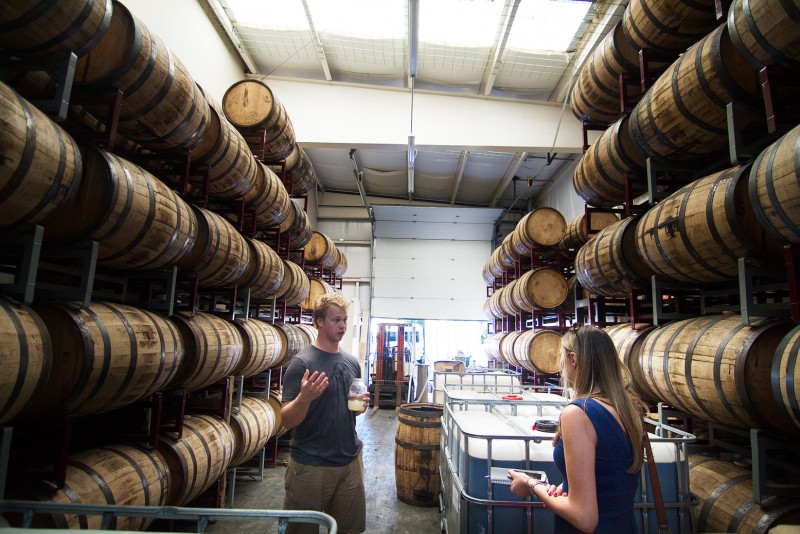
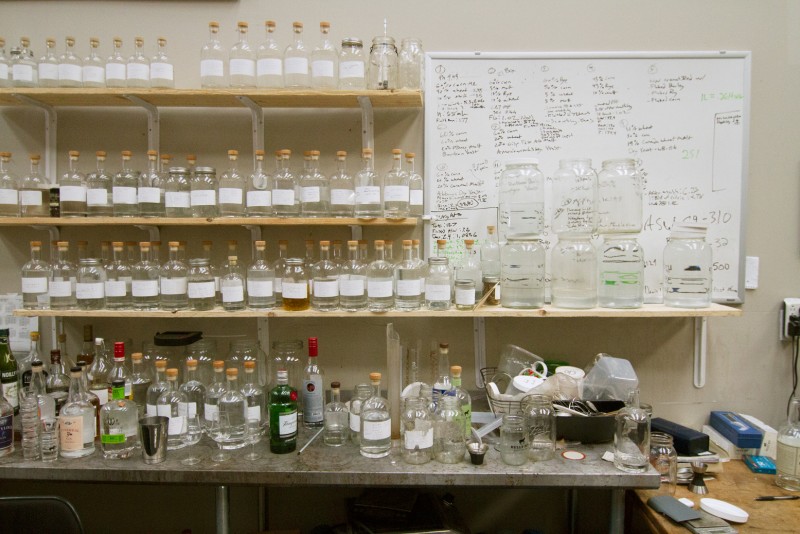
Here’s the recipe tasting and experimenting bench—where both science and magic happen. All of those different bottles on the shelf are mixes and experiments for forthcoming spirits.
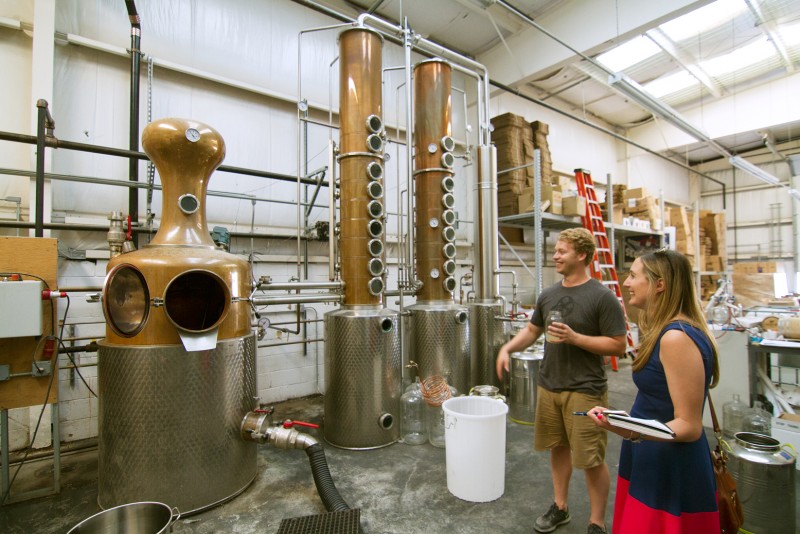
We got an in-depth tour of the still operations—boy did it smell sweet.
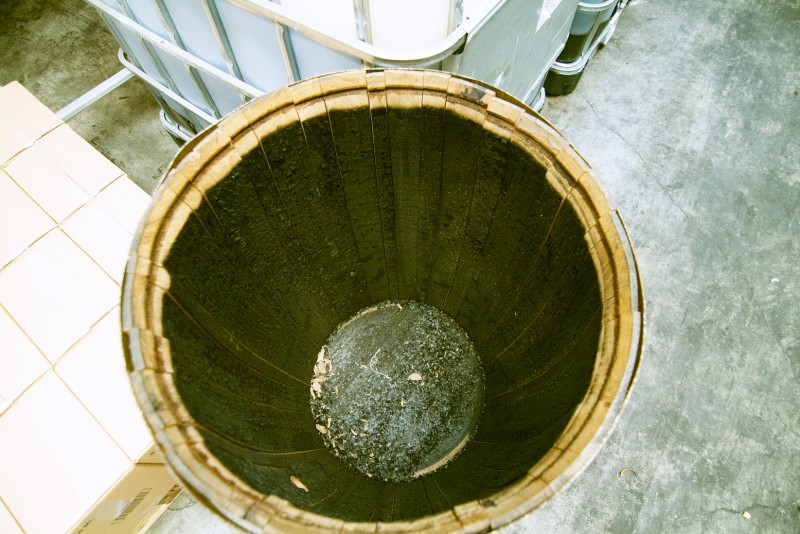
The inside of a used, charred barrel.

Tasting a well-used bottle of their hub punch.
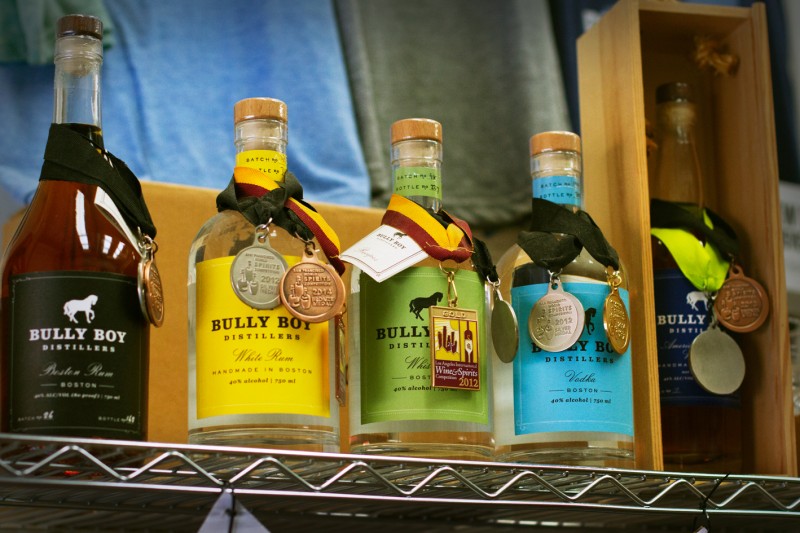
Look at all of those awards.
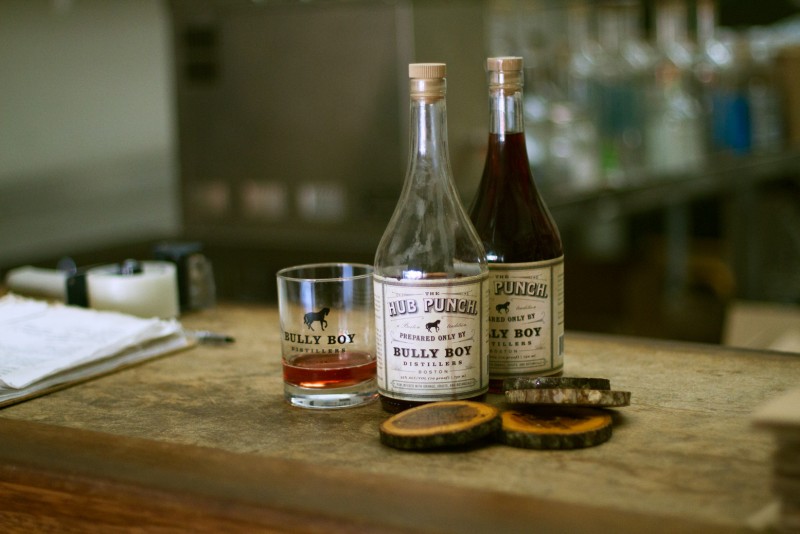
Hub punch and swag—check out those hand-lacquered coasters.
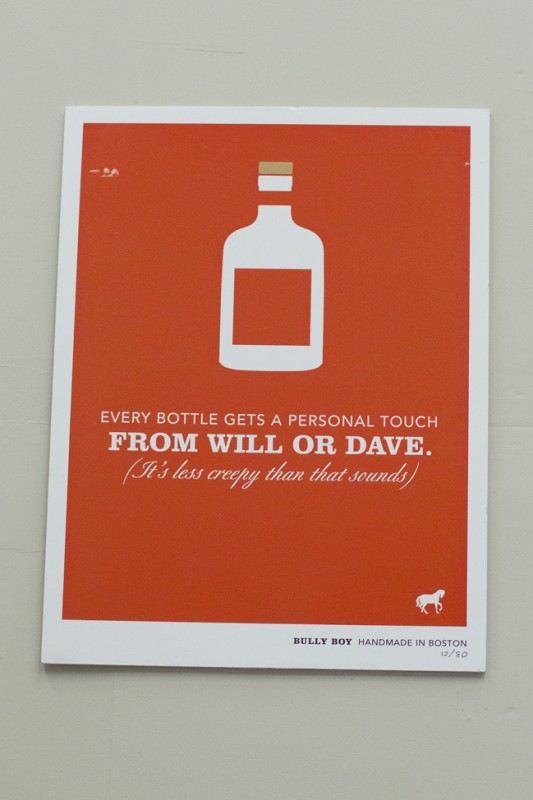
They had some really excellent posters… a few of my favorites:
“Every bottle gets a personal touch from Will or Dave. (It’s less creepy than it sounds)”
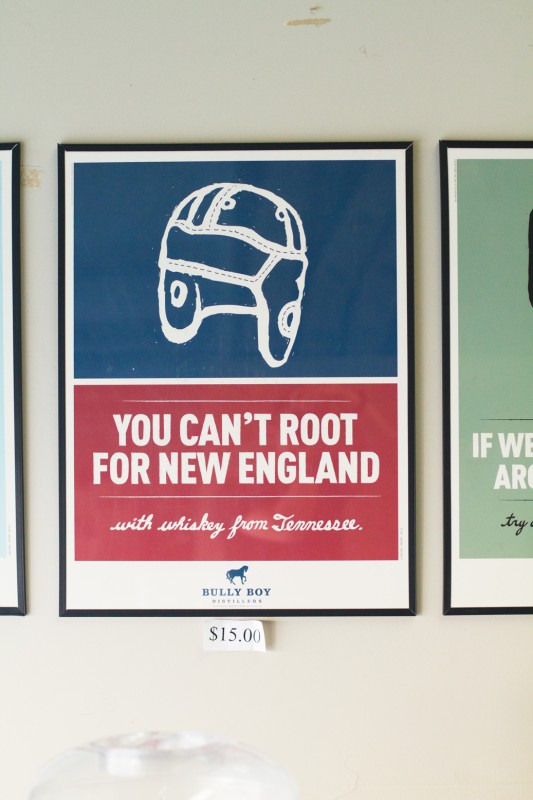
“You can’t root for New England with whiskey from Tennessee.”
Excellent marketing, excellent drinks, excellent company.
Thanks again guys. We’ll be back.
Bar Inventory Management: An Insider’s Perspective
Intro
Although my bar managing days are behind me, I’m lucky enough to be able to apply what I learned from high volume bar management to my everyday routine, here on the Business Development team at BevSpot.
I worked at one of Southie’s coolest restaurants, Lincoln Tavern. Lincoln has two large bars, and the restaurant itself has a 300-person capacity, not to mention, it’s extremely popular. When you work for a popular restaurant, you need to do everything in your power to keep the crowd happy. From the bar manager’s perspective, this means keeping a ton of product on hand to offer patrons a variety of beverage options.
Overseeing ordering and inventory for a bar this size is extremely daunting and time consuming. And to top it off, the inventory management system in place at Lincoln at the time was an absolute nightmare. To this day, I think about the countless hours my predecessor must have spent dealing with this system. I was lucky enough to not have to put up with it for very long.
Insider Thoughts on BevSpot Bar Management Software
When I was first introduced to BevSpot, I have to be honest and admit that my expectations were low. I figured anything was better than what we had, and doing inventory until 4am Monday mornings (or the alternative, coming in on my day off,) was really starting to take a toll on my work-life balance. Three of us were involved in taking inventory at that time, we spent roughly 10-12 hours a week getting the process done. So really, any change at all was to be welcomed. What I didn’t expect was for everything to get much, much easier.
Anyone in the sales industry will talk about the beauty of things just aligning for the right client—timing, customer need, and talking to the right person. As soon as I saw the BevSpot platform, it was a closed deal. And within 2 weeks, that 10-hour inventory was cut by more than half—not only was I spending just 3.5-4 hours per week on inventory, but my orders became much more efficient, decreasing in totals by 10%, with sitting inventory down by 12%. The new system was literally putting money back in the owners’ pockets and let me tell you firsthand—they were extremely pleased.
Ordering was completely streamlined. I didn’t even have to make the 15 calls to all my different sales reps. Suddenly, I had a lot more time on my hands to put back into other important aspects of managing a restaurant.
I was so passionate about what BevSpot did for me, and having many friends in the industry, I just wanted to spread the word and help as many people as possible. I knew how they felt and trust me, I’ve never spoken to a single person who enjoys sitting in a liquor room with pen and paper and Excel spreadsheets for hours on end. And so I left bar managing behind me when the opportunity to work for BevSpot presented itself.
What’s Next
And now I join the mission to rescue others from 4am inventories. I was once in their shoes (and sometimes still have nightmares about it). But I’ve also seen from the inside how much better it can be. Take it from me, inventory and ordering does not need to take all night. It can only get better from here.
Schedule 15mins to chat with a product specialist
Start a FREE Trial Today! BevSpot offers full product education and account setup for all customers! No card Information needed!
Bully Boy’s Hub Punch
If there’s one ideal consistently observed at Bully Boy Distillery, it’s the importance of staying true to your roots. Brothers Dave and Will Willis run the local craft distillery that observes family values and the history of the good old fashioned alcohol industry, with one 600 liter copper pot still.
Inspired by their childhood home and family farm, Will and Dave started Bully Boy after discovering a vault filled with pre-prohibition historical craft spirits in the basement of their farmhouse. A seed was planted and the revival of artisan craft spirits began.

Bully Boy’s roots focus on the purity of the originals—vodka, whiskeys, and rums; they keep it classic. But what caught our attention was their most recent craft debut: Hub Punch.
Bully Boy’s inspiration comes from history, so it’s no surprise that Hub Punch was born out of just that, when local Boston mixologist Fred Yarm (of Russell House Tavern) stumbled upon an old bottle of Hub Punch on eBay, circa late 19th century. Curious and fascinated, he presented his finding to his friend, Dave Willis.
Dave, an expert on Boston pre-prohibition spirits was unfamiliar with the elusive Hub Punch, but the vintage looking bottle struck a chord of interest. Baffled by the extinct concoction Dave and Fred dug deep into the history of the vintage bottle and pieced together an anecdote of Boston history.
It all began in New York’s Hub House Hotel, when politician C.H. Graves served up an aged rum cocktail infused with fruits and spices. The drink became so popular that Graves brought the recipe with him to Boston, opened a family-run distillery, and began selling it all over the city. It faded into the dust with the coming of prohibition, along with many other popular spirits, but the appearance of the bottle presented the Willis brothers with an opportunity for revival.
After heavy research into the original Hub Punch recipe, the Bully Boy Distillery infused their own aged rum with raspberry, orange peel, lemon peel, and botanical spices and herbs. The result? A syrupy textured fruity elixir, with herbaceous tones and a tart finish. Cut with club soda, an amazingly refreshing concoction that resembles punch without the overly sugary qualities.
The Bully Boy team will be the first to tell you that Hub Punch is not the distillery’s best seller, but that’s not the goal. It’s a true revival of history, a moment captured in a bottle (with a replicated label designed after the original), and one exclusive to Bully Boy. It’s as rare as it is versatile—the perfect boozy base to sangria; or a champagne brunch with a splash of punch. There’s no need to keep bitters or other pricey mixers on hand—Hub Punch has all the complexities needed for any cocktail.
Check out some Hub Punch cocktails at Bull McCabe’s, Coda, Russell House Tavern, and many other Boston area restaurants. Or pick up a bottle at a local liquor store.
The Man Behind the Boston Attitude
Boston is a small town. As someone who did not grow up here, I quickly grew to appreciate the ease of networking, support, and community in this town. We’re a team. It’s constantly seen in our spirit of sports, our suffering through long winters, and our energy coming out of hibernation when the sun finally shines. We support each other through the hard times and celebrate together in the good times.
John Romard, better known by most as @BostonAttitude, is a born and raised Bostonian who exudes the true Bostonian spirit—so much so that he took his passion for the city to the social media world.
Having been familiar with Romard’s celebrity status in the Twitter universe, I was excited to finally put a face to the handle. And after learning about his extensive background in the hospitality and alcohol industry, I knew we wouldn’t have a lack of topics to discuss.
First Impressions
Romard is a guy you want on your side. Until seeing how clearly at home he appears lounging at the very posh Rooftop at the Revere Hotel, he could easily be mistaken for the bouncer (and not one I’d suggest testing a fake ID on).

As it turns out, my initial inkling placing Romard as a ‘tough guy’ is exactly the mindset that laid the groundwork for ‘Boston Attitude.’ The term was first called out to him at a young age, on vacation in Nova Scotia, “I was about 11 years old. Someone introduced me as the ‘cousin from Boston’ and I immediately became known as the kid with the ‘Boston attitude,’ which they had characterized as someone who wanted to start a fight,” says Romard.
Years later, at a Blackjack table in Vegas, the dealer introduced everyone at the table and asked where they were from. Upon Romard’s declaration as a Bostonian, a man at the table said he would be leaving after the next hand because “all these guys with the Boston attitude just want to fight.” Naturally, this made Romard want to do exactly that, who took some offense to the remark as an insult to his beloved city, but it also planted a seed.
Back in Boston years later, Romard was home watching Tyler Florence on the Food Network and local Boston favorite Roxy’s Grilled Cheese was featured on the show. As fate would have it, the team was introduced as “the guys with the Boston attitude.” Romard immediately hopped on Twitter and secured the handle right there and then, officially giving birth to an idea that had been growing for quite some time. It was time to redefine the Boston attitude.
Career
Hospitality and alcohol management lie at the core of Romard’s background. Right around the beginning of the social media movement and Facebook’s debut, Romard was working for Aramark, Boston University’s catering service. “There’s a lot going on with booze around BU that you don’t realize” says Romard, who ran liquor management for the BU Pub, “It’s exclusive to students and alumni 21+ and faculty, but there was no sign or anything. There was only one way to promote it and that was through Facebook.”
Romard took that social media mentality with him to his next job for the Legendary Restaurant Group where he immediately asked how they felt about social media, to which they replied, “what’s that?”
Inevitably, it wasn’t long before management approached Romard with ideas on promoting the brand through social media, “I’m on it” Romard replied.
And he certainly was.
Boston Attitude launched in 2011, while Romard was working for Legendary’s Tavern on the Water. “Seaport was just being built and we needed a presence. The sales were there but I wanted the lines out the door.” At the time, there was no Boston-focused event presence on social media.
Growing a Twitter Following
“There’s a lot of fakeness out there in the industry; my followers are real because my conversations are real.”
About two years ago, Romard took Boston Attitude to a full time role. At the time he had about 4,000 followers. Upon going full time, that number steadily climbed—to 6,000 that first year, soon to 10,000, and today, 15,000 and growing. “I used to look for things to talk about, but now I’m flooded with emails,” says Romard, who speaks daily with PR and Marketing firms in and around Boston.
“The number one thing about Twitter is consistency,” Romard advises, “be consistent with content and stick with what works.”
Lessons learned from his hospitality background ring true in his Twitter career as well, “It’s about the right clientele, not the numbers. I can tweet that I’m sitting here at the Revere and mention some amazing drink special, but a bunch of highschoolers aren’t going to care. It’s about reaching the right people. I want to be the Improper Bostonian for social media.”
Personal Favorites
I couldn’t avoid grabbing a few recommendations from the townie expert, who quickly calls out Trade for it’s great beverage program, outdoor patio, and flatbread pizzas.
Eastern Standard is another go-to: “they really set the standard for bartending in the city and that is the place I take my staff to show them how it’s done.”
Romard’s favorites are constantly changing (especially with all the new restaurants popping up,) but he remains true to one old local favorite, “I’m at Cornwalls in Kenmore with a pint of Guiness more than I care to say. It’s a family-run favorite of mine.”
What’s to Come
The Boston Attitude name has expanded in recent years, with the launch of TheBostonAttitude.com and an increasively active Instagram account, “Instagram is less promotional; not as much about events and destinations as it is about photos of Boston,” says Romard.
And it is that celebration of Boston that is at Romard’s core, especially as that ideal of “the Boston attitude” has evolved immensely in recent years, which Romard credits to the 2013 Boston Marathon bombings, “that compassion, community and support is what people have come to recognize as ‘the Boston attitude.’”
So Romard constantly channels that into his online persona. As a helicopter hovers overhead I momentarily lose Romard’s attention as he wonders what might be going on nearby. “That’s it, that’s what Twitter is about” he tells me, and I can see that distracting passion he feels to immediately report back to his audience, never leaving anyone in suspense. It all comes back to the real ‘Boston attitude’— community, support and teamwork.
